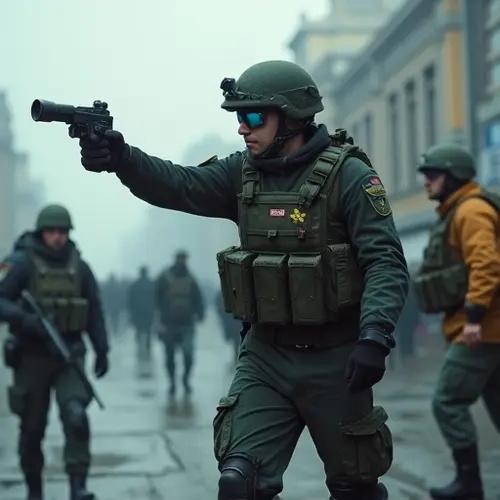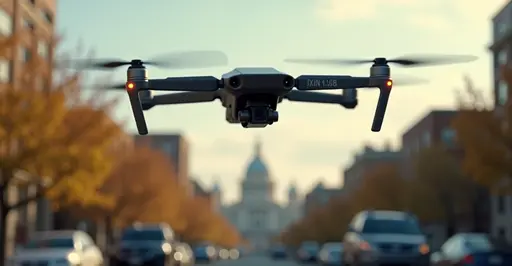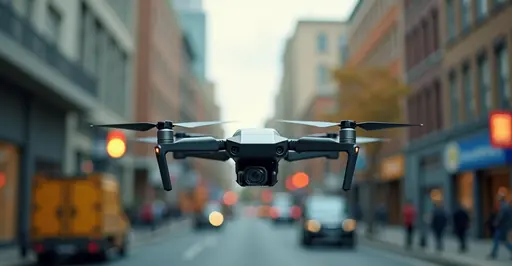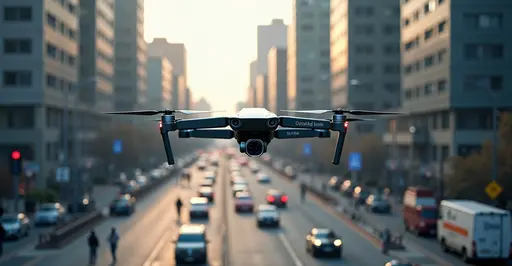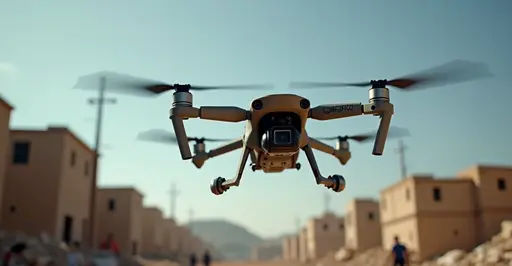
Swarm Technology Breakthrough
Coordinated drone swarms are transforming disaster response capabilities worldwide. The Technology Innovation Institute (TII) in Abu Dhabi has developed groundbreaking AI algorithms enabling drone swarms to operate without central command. These decentralized systems autonomously adapt formations and make real-time decisions based on shared objectives, significantly improving efficiency in crisis situations.
How Swarm Intelligence Works
The drones mimic natural swarm behavior through advanced AI that combines classic robotics with biological inspiration. Each unit communicates with nearby drones using local perception systems like infrared and radio frequency. This allows:
- Parallel task execution
- Instant adaptation to environmental changes
- Continued operation if individual drones malfunction
- Dynamic reorganization during communication blackouts
The system enables a single operator to manage entire swarms through TII's Command and Control platform, reducing human workload while maintaining mission continuity.
Global Developments
Middle East Leadership
TII's technology is being commercialized through VentureOne for deployment in law enforcement, energy, and public safety sectors. Dr. Najwa Aaraj, CEO of TII, emphasizes: "We're pioneering Collective Autonomy where AI-powered drones operate as intelligent, decentralized swarms for precision-driven missions."
Asian Advancements
India's Defense Research and Development Organization (DRDO) showcased armed swarm capabilities in 2021. Their drones operate in high-altitudes and rough weather at 100 km/h speeds. NewSpace Research & Technologies won a $15 million Indian Army contract for surveillance and attack swarms, while Dhaksha Unmanned Systems focuses on drone architecture.
Military Applications
Israel Defense Forces have deployed swarm drones against Iranian forces and to locate rocket launchers in Gaza. The technology demonstrates exceptional effectiveness in urban combat and reconnaissance missions.
Disaster Relief Applications
Crisis Response
During floods and earthquakes, drone swarms:
- Prioritize rescue activities
- Split tasks autonomously
- Deliver medical supplies to inaccessible areas
- Create real-time damage assessments
- Detect survivors using thermal imaging
Professor Enrico Natalizio, Chief Robotics Researcher at TII, notes: "As climate disasters increase, cities need tools that are faster and smarter. Swarms evolve beyond surveillance to become vital for civil protection."
Environmental Monitoring
Beyond disaster response, swarms excel at:
- Crop health monitoring in agriculture
- Ecosystem restoration tracking
- Infrastructure inspection
- Hidden water leak detection
The technology is particularly valuable in Arctic, rainforest, and desert environments where human access is limited.
The Future of Swarm Technology
Global collaborations are testing real-world applications through industry partnerships. Government-backed AI ecosystems ensure ethical compliance and regulatory alignment. Dr. Dario Albani of TII confirms: "Our secure platform enables oversight of entire swarms while ensuring continuity in communication-denied environments - essential for mission-critical operations."
With drone swarms becoming more accessible, expect wider adoption in firefighting, pipeline monitoring, and conservation efforts worldwide. The combination of decentralized intelligence and scalable automation represents a quantum leap in emergency response capabilities.

 Nederlands
Nederlands
 English
English
 French
French
 Deutsch
Deutsch
 Espaniol
Espaniol
 Portugese
Portugese




